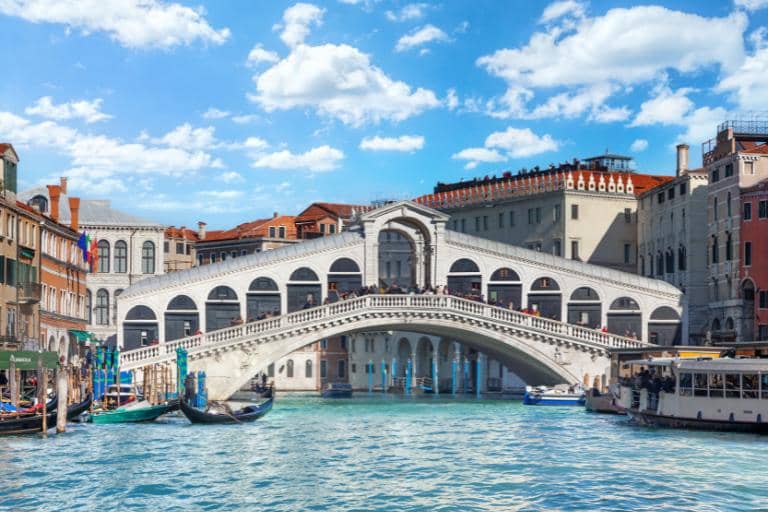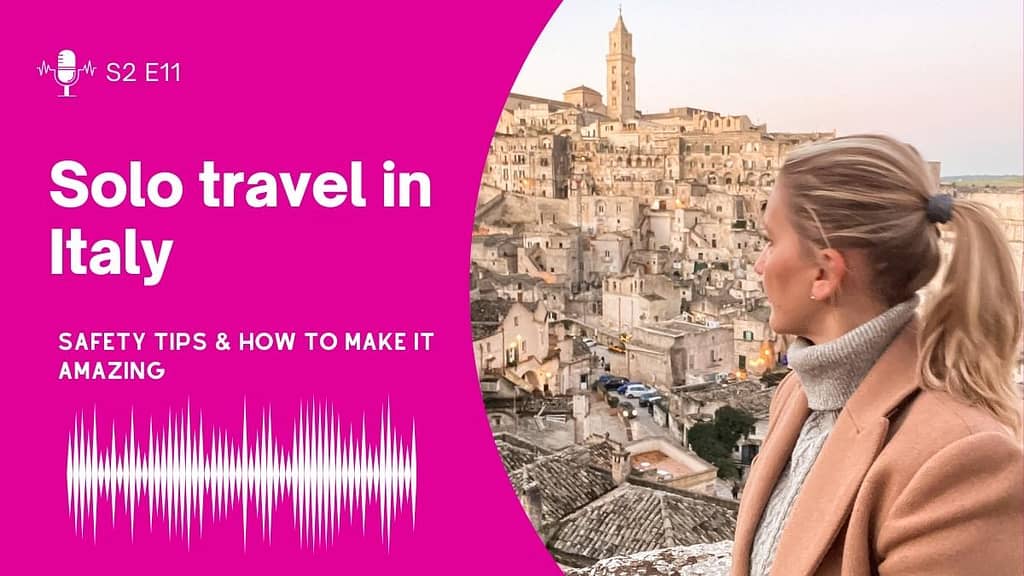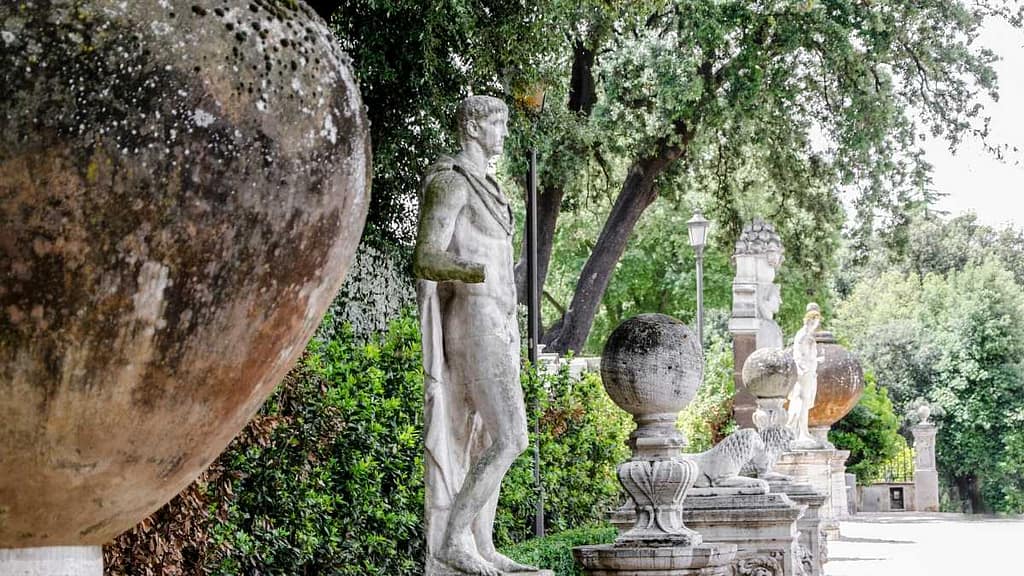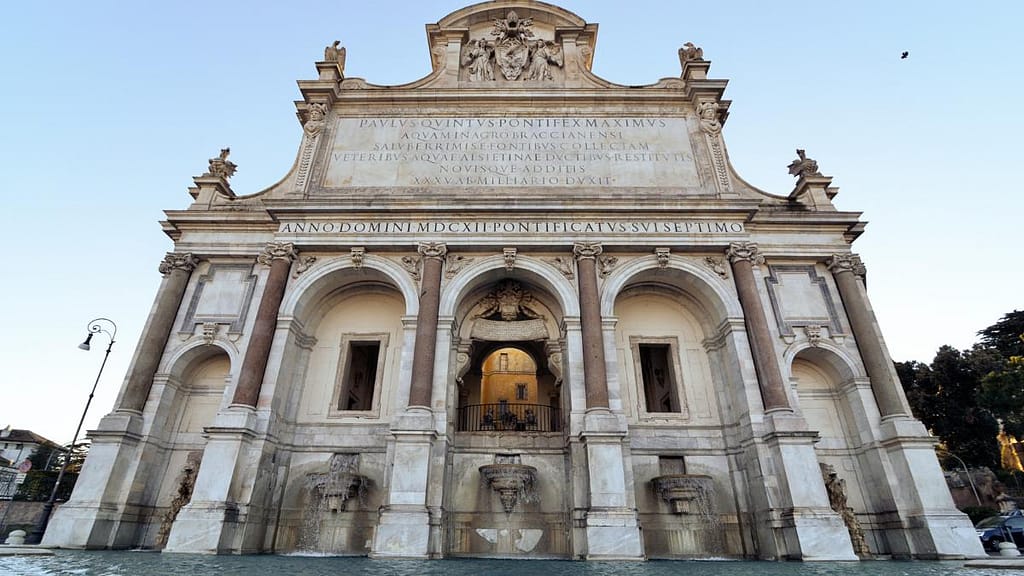Italy is a destination that appeals to all types of travellers and is an amazing place to discover alone. It is, after all, the birthplace of the Roman Empire, great food and amazing landscapes. Since moving to Italy, many people have asked me if Italy is a safe country and a good place for solo travel. This would be a great time to address this question. So, if you’re thinking of solo travel in Italy, read on.
While I don’t consider myself strictly a solo female traveller, I do travel alone quite a bit. Sometimes, it’s for work, other times, it’s for pleasure, and I’m very comfortable with it. Over the years, I’ve visited many places, not just Italy, on my own. I visited Italy alone before we moved here, and since we have, I’ve also travelled around the country on my own.
This post may contain compensated links. Find out more info in our DISCLAIMER.
- Solo travel in Italy
- What makes Italy a great place for solo travel?
- Is it safe to travel solo in Italy?
- Tips for planning your Italian solo adventure
- Accommodation options: where to stay
- Transportation tips for getting around Italy
- Budgeting for your Italy trip
- Making the most out of your solo experience in Italy
- When is the best time to visit Italy?
- Do you need to speak Italian when travelling in Italy by myself?
- Final thoughts on solo travel in Italy
Solo travel in Italy
To give you some context, I’ve lived in Italy for almost two years, and my Italian is very basic. I’ve taken trains, buses, and planes and driven around by myself, so I can offer you insights into what it’s like to travel alone in Italy from my personal experience. I’ll cover this topic as broadly as I can and address some of the concerns you might have as someone thinking of visiting Italy alone.
What makes Italy a great place for solo travel?
There is a reason Italy is such a popular destination. It has everything you might want in a destination – food, culture, history, art and outdoor activities. Looking at the different books and movies either set or filmed in Italy, it’s a place that draws a specific type of solo traveller.
One of the most influential (at least how it seems to me) books and movies about solo travel in Italy is the book and movie Eat Pray Love. The book, written by Elizabeth Gilbert, inspired the movie starring Julia Roberts. The story is not set exclusively in Italy, but a significant portion of it is based on the author’s transformative solo travel experience in Rome.

In the book, she explores the city’s rich history and has these immersive experiences with food and people, all while dealing with questions of love and happiness. I think this movie alone was the reason so many people, and women, in particular, came to Italy to find themselves afterwards. The “coming to Italy on your own and discovering or rediscovering yourself” seems to be a common theme, and it’s a place where women, especially these movies and books, seem to venture to.
Another great example is the book and movie adaptation of Under the Tuscan Sun. The main character, Frances, comes to Tuscany after a bitter divorce and subsequently finds joy, renewal and, in a way, herself. All of these movies and books are great inspirations, but I think there are other reasons besides coming to Italy alone to find yourself. If it’s something you’re into, great, you do you.

For me, Italy is the perfect place to explore history, art and culture. You can explore some of the best museums out there, immerse yourself in thousands of years of history and indulge in amazing food all in one day. There is just so much to see and do here in Italy, that you won’t be bored. And since you can set your own schedule, you can get as many museums, churches, or food as you want whenever you want.
Is it safe to travel solo in Italy?
Italy is a very safe place with a very low crime rate. It’s especially safe for solo travellers and women in general. I’ve encountered several posts in which the authors mentioned that verbal aggression and catcalling from Italian men are common. This hasn’t been my experience, but I can’t speak for everyone. I don’t think you should think of this behaviour being the norm here. As I’m sure any woman knows, men can be jerks in any country, and that’s something we are unfortunately all too familiar with.

Italians are generally friendly to tourists and can be very curious about you and where you’re from. They will probably ask you where you’ve been in Italy and what else you’re seeing, and they are happy to give you advice or suggestions. I found that they get almost delighted when you mention visiting places that are not on the top of every tourist’s Italian itinerary and it makes them look at you in a more positive way.
The only places where you should be vigilant are very touristy spots where petty theft can be more common. As it is in many countries, pickpocketers are always milling around spots where many tourists go. One of the times we were in Rome, someone got their wallet stolen by the Trevi Fountain. It’s not surprising as it’s a relatively small area usually packed with tourists. When they are getting distracted by taking pictures, the thieves make their moves. Staying vigilant and being aware of your surroundings is the number one advice for any traveller, and it’s not just limited to Italy.
Tips for planning your Italian solo adventure
If this is your first solo trip to Italy, I recommend starting with bigger cities like Rome, Florence, Palermo, Naples, Venice, etc. These are very touristy destinations in Italy and here you’ll likely find more resources for travellers, including other solo travellers. You will also have a lot more things to see and do, with a broader choice of dining options.
If you don’t speak Italian or only know a few phrases, you might be more comfortable in touristy places where people are more likely to know English. Of course, this depends on your comfort level and abilities. Some people have no problem travelling to places where they don’t speak the local language and the locals don’t speak English and are fine. Others might feel more self-conscious or uneasy. You decide.
Solo adventures for the senses: my recommendations
- Explore one of the world’s busiest museums and marvel at Michelangelo’s fresco “The Creation of Adam” in the Sistine Chapel.
- Marvel at the David, stroll through Duomo Square, see works by Michelangelo, Leonardo, Raphael and many others with this 4-hour Accademia and Uffizi Gallery guided tour.
- Go on an adventure to the heart of Tuscany and dive deep into the rich history and heritage of Italy’s iconic Chianti region with this wine tour.
- Learn how to make pasta with a local chef in the heart of Trastevere in Rome while you indulge in wine and prosecco.
In Italy, the bigger cities are also the most visited ones. There are plenty of other places that might be smaller but are also great to visit. Places like Bologna, Cinque Terre, Chieti, Lecce, and others are also great to explore. This is Italy, there is no shortage of amazing towns for you to visit. Just because everyone else goes to Rome, Florence and Venice, it doesn’t mean that you have to as well. Or at least, don’t only go to these places.

Keep in mind that in smaller towns and regions, you’re less likely to find English spoken there. In restaurants, museums or bars, you’ll be more likely to find someone who can communicate in English, but I would say that’s not the norm. Visiting places like this can be a unique and enriching experience, but again, it comes down to your level of comfort and language skills.
Best Italy tours for solo travellers
Want to go to Italy alone but want someone to show you around? There is a tour for that. Here are my top pics for tours around Italy.
Accommodation options: where to stay
As a tourist destination, Italy has all the options including hotels, motels, bed and breakfasts, airbnbs and so on. Many solo travellers prefer staying in hostels, and you’ll find many of them in Italy, especially in the larger cities. Hostels are a great option if you want to meet other people and want that social component.

Hostels might not be as common in smaller cities and less touristy places, but you’ll likely find private rooms, Airbnb and small hotels. One of the great ways to experience Italy is by staying in an agriturismo, which is like a farm stay. These are outside city centres and are family-run, which means you’ll likely interact directly with the locals and get great insights into what to see and do from them.
PRO TIP: When visiting major cities in Italy I recommend staying in the city center. This way, you’re close to all the major attractions and don’t have to travel far to get back to your hotel. Research hotels and private stays with Booking.com
Hotels are the obvious choice for many as they come in many options, from budget to luxury accommodations. Hotels are great if you crave privacy and can offer more security than a hostel might. I tend to opt for hotels when I travel alone, but private apartments and bed and breakfasts are also great.
Transportation tips for getting around Italy
I love taking trains in Italy, as they often offer an opportunity to see the landscapes while you sit and relax. Italy has a very robust transportation network with high-speed trains and excellent connections between cities. Compared to Canada, they are lightyears away. I often take the train in Italy, and I’ve only once had an issue with a train delay.
You can get your train ticket at the train station or with an app. I use Omio because it’s fast and easy, and you can get your ticket directly on your phone. These days, ticket machines at train stations, buses and subways come with different language options, which makes it easier to figure out how to buy a ticket without having to ask someone.
PRO TIP: Book your train, bus and airline tickets in Italy with Omio
You might have heard about validating your ticket before you get on the train, but with an app, you don’t have to remember that. If you get a ticket that has to be validated and you don’t, you can get a hefty fine. This might be silly to say, but I’ve never had to validate my ticket in Italy because I always get it on my phone or from a booth that doesn’t require validation. When in doubt, ask at the train station.
Busses are also relatively easy to take in Italy. As great as the train network is, it doesn’t extend to every pace you might want to visit. Bus schedules are often available online these days so you can easily find them by googling for your destination and bus schedule. The app I mentioned, Omio, also covers buses and flights, so I often use it to find out how to get from place A to place B and then decide which option is best.

Now, if you’re feeling adventurous and confident, I recommend renting a car. Road-tripping in Italy is one of the best ways to see the country. Having a car gives you even more freedom, so you can visit smaller and off-the-beaten-track places that might not be available if you only relied on a train or a bus.
Driving in Italy is not very complicated. The road rules apply the same as they do in many other countries. They drive on the right side of the road, the speed limits vary between 30 km/h in small towns to 130 km/hr on the highway. They also have toll booths, which may or may not be common where you come from but they are easy to navigate. Read this guide about driving in Italy if you want more information.
PRO TIP: Start your Italian road trip with RentalCars.com
You need an International Driver’s Licence, which might also be referred to as a Permit. You can get it from your local automobile association, like the CAA in Canada. You must have a valid driver’s licence and an International Permit to drive in Italy. So, if you plan on driving on your trip, definitely get one. They are valid for a year, and you can use them in many countries around the world.
Budgeting for your Italy trip
When budgeting for your trip, accommodations, transportation and food will be your most significant expenses. I find Italy very affordable, but that also varies across the country, depending on where you go. Places like Milan, Lake Como and Florence might be more expensive than Naples, Palermo or smaller towns in regions like Puglia or Abruzzo. Rome is a good example of a city where you can get a wide range of prices. A cappuccino and a corneto can set you anywhere from 2.20 to 5.50 euros depending on where in the city you are.

No matter what city you’re in, expect to pay more in the more touristy areas than what you’d pay in a coffee shop or a restaurant a few streets over. Generally, the prices here are very good for food and drinks. If you want to save some money, you can always buy groceries from the grocery store or a local market and make your own meal. If you want to go with this option, choose accommodations that offer a kitchen and a fridge.
Depending on when you are travelling and where, will also impact how much you’ll pay for a hotel. Even outside the tourist season, a hotel in Rome will likely cost more than a hotel in a small town in the high season. Research prices ahead of time to understand how much you’ll need to spend. I use the booking.com app and save the places I like to list that I can refer to when I’m ready to book.
Making the most out of your solo experience in Italy
If you come to Italy for a short city break or a few days, you might be perfectly happy just walking around the city of your choice, maybe hitting a museum or two, and then grabbing some food. If you plan on spending more time here, I recommend taking a walking tour, cooking classes or joining a meetup.
It’s a great way to see a place and get a feel for the local culture. Plus, you’ll have a local guide to show you around and make the destination more familiar. I was in Rome recently, and I took a pasta-making class, which was a blast. Sure, there were mostly couples in my group, but that didn’t stop me from having fun and learning how to make pasta. Walking tours are also great as they come in many varieties, from food to architecture, and you can learn more about the place you’re in.
When it comes to exploring beyond the place you’re in and if you’re not interested in renting a car or figuring out the train and bus options, you can take a day trip. These are also great as they allow you to go to another destination without worrying about the logistics. For example, if you’re in Rome and you fancy a trip to Pompeii or a winery tour in Tuscany but don’t want to bother with figuring it out, book a day trip. All you have to do is show up and let someone else do the planning. When booking these types of tours, make sure to read what the tour includes and what it doesn’t. Some include just the transportation while others will also include admission and a guided tour.
When is the best time to visit Italy?
Italy is a year-round destination, and you can travel whenever you want. Summer months are going to be the hottest and most touristy. This is when you have a lot of families with kids and students travelling on summer break. There is nothing wrong with that, but as a solo traveller, you must remember that the prices will also be more expensive, especially for single accommodations.
Many people will tell you that the best time to visit Italy is in either April/May or September/October. They are not wrong but I would argue that Jan to March and November/December are even better. Here is why. Most people outside of Europe think of Europe as a summer destination. Because when it’s the middle of winter in Canada, you’re probably thinking of going somewhere hot in the Caribbean, not Italy. But here is the thing. Winter in Italy is not what we think of winter in North America.
If you visit northern Italy, you’ll get snow and cold. It still won’t be as cold as it gets in Canada. Places like Rome have a mild winter, where you can walk around in a light jacket and be fine. In southern Italy, the weather is even better. I was in Naples in January, and it was a gorgeous day. I think the temperature got close to 20 degrees, and it was sunny. It was a glorious day. I was in Rome and Bologna in February, and while it was raining, it was still not that cold.
Last November, we drove to the Amalfi Coast, and it was still warm enough for people to go in the water. Were there tourists? Of course, there were. This is Italy. You’ll always find tourists here, just fewer than during peak season. Museums, archaeological sites, bars and restaurants stay open all year round. So, why wouldn’t you prefer to come to Italy in winter? I think it’s a better and more authentic experience, and you’ll probably spend less.
Do you need to speak Italian when travelling in Italy by myself?
No, you don’t need to speak Italian when travelling in Italy, but it’s helpful to know some basic phrases and words. Even simple greetings like hello and thank you can make a difference. I always have a translation app on my phone as a backup in case I need to communicate something I don’t know how to say.
As I mentioned earlier, you can use apps to book tickets and accommodations. These apps often automatically translate your conversation with the host, so there’s no need to worry. Now, you don’t have to speak Italian, but you also shouldn’t expect everyone else to speak English to you. Try learning a few words in Italian, and you’ll have a better experience.
Final thoughts on solo travel in Italy
Travelling to Italy by yourself can be the perfect way to immerse yourself in the Italian culture on your terms. There is a reason so many come here to find themselves. Italy is a haven for solo travel, regardless of your gender. As a solo female traveller, I found Italy to be a safe, welcoming, and easy-to-navigate destination. To experience a taste of the Dolce Vita, you first have to find joy in your own company. I hope this post has alleviated any concerns you may have had about travelling to Italy alone and that you now feel more confident about planning your trip.



